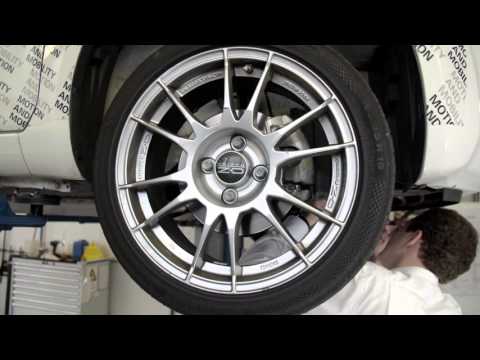At the beginning of this month, ZF showcased its new electric drive system and announced that volume production would start in 2018.
More Electric Axles on the Way – A Look at the Tech Your Next Car Might Have
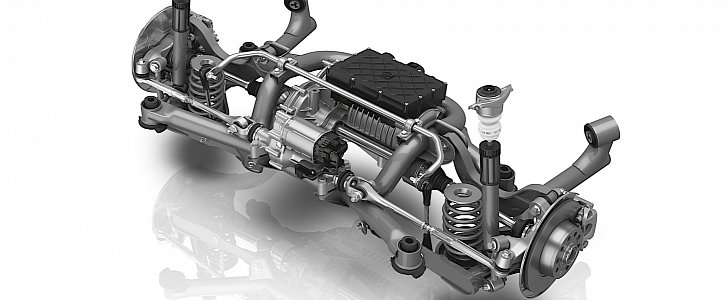
While overlooked, the technology brings a modular approach to electric axle drive. The ZF solution is suitable for electric cars, hybrids, and fuel cell vehicles.
Even though the European carmaker that has partnered with ZF has not been mentioned, the German company has specified that the new solution delivers up to 204 HP (150 kW) and is fully integrated into the axle so that it can be placed in both front-wheel-drive and rear-wheel-drive applications.
You are probably wondering why this matters to you. Here’s why – this system could eventually be installed on several models, made by various carmakers, and it has the potential to revolutionize hybrids.
Think of the possibility that your next car could have up to 204 HP at the rear wheels, while the front wheels have another engine.
This would bring astounding power-to-weight ratios for vehicles that were not previously known for high outputs in this field. ZF did not mention if the system can be fitted to both axles on a vehicle, which would bring even more power and torque for an EV, Hybrid or Fuel Cell Vehicle.
Another highlight of this system is the maximum torque of 380 Nm (280 lb-Ft), which the electric engine delivers. The entire electric axle weighs 113 kilograms (249 lbs), and can be integrated into numerous vehicle architectures. All that is needed is a battery to power the system. Since the e-axle has a compact size, the battery can be placed above the axle or beneath the passenger compartment.
The other significant breakthrough achieved by ZF with this new system is using an Asynchronous Motor (ASM). This motor does not require any magnetic materials, thus reducing the need for rare earth elements like neodymium or dysprosium. Thanks to this solution, the system is cheaper and does not harm the environment like other electric motors, such as the conventional Permanent-Field Synchronous Machines (PSM).Possible applications
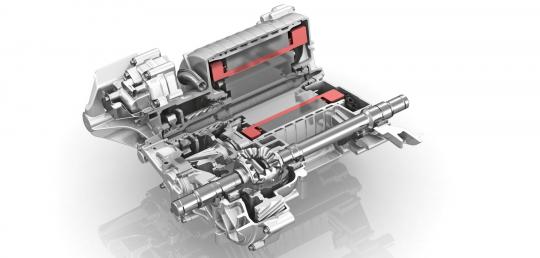
The new electric axle drive from ZF can equip future electric vehicles, FCVs, or hybrids. Thanks to its reduced weight and impressive maximum output, the German supplier can aid several carmakers in delivering hybrids and electric vehicles with more power.
Imagine a volume electric car that features a 204 HP motor on an axle. Alternatively, future hybrids could have less weight and come at a lower price than today. While ZF has not specified with which carmaker it will team up for the first project, several European companies could be the first recipients of the new system.
Considering that most European automakers have some hybrid or electric vehicle in their ranges, it is hard to say which will be the first to use ZF’s new system. If it works just as well as the figures make us believe it does, we would not be surprised if several European brands went for this solution instead of developing in-house alternatives.Performance and Size
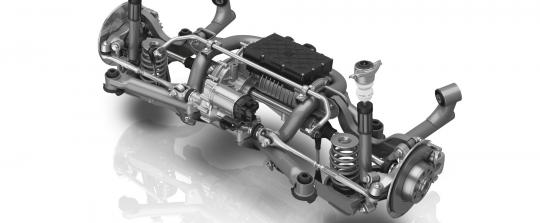
The new module from ZF integrates an electric motor and a two-stage single-speed transmission in the same case. It also features a differential and a dedicated cooling unit. All of these components have power electronics and software. This fully developed solution is far from a bolt-on system, and it can significantly reduce development costs for upcoming electric cars.
The axial length of the unit is 45 centimeters (17.7 inches), with a width of 38 cm (14.9 inches). Its height is about 51 cm (20 in). While not entirely suitable for every car on the market today, carmakers can fit an axle like this in just about any upcoming model if they see fit.
Since the European Union is pressing carmakers to reduce the emissions of their vehicles, turning some cars into hybrids could be a solution for many carmakers, and this system could come in handy.
The engine reaches speeds of up to 13,000 rpm, and the single-speed transmission has a ratio of 9.6:1. ZF has integrated a twin-stage operation to reduce noise and to ensure a compact package without including more gears.
The German company claims its system is highly efficient regarding noise reduction, an element that cannot be left behind in electric cars, where there is no internal combustion engine to conceal other sounds. Competing systems
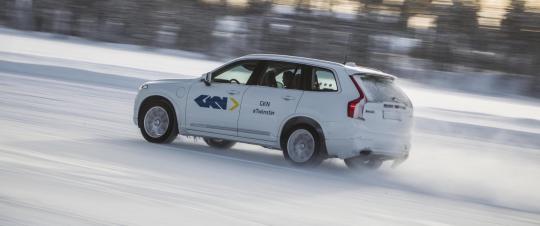
ZF is not the only automotive supplier to develop an e-axle. The Brits at GKN Driveline have developed a technical solution called eAxle, which has been sold in over 300,000 units. Its motor develops 80 HP (60 kW) and 240 Nm (117 lb-Ft.). Weight has not been specified in the press information regarding this system.
The transmission ratio of the GKN solution is 1:10, and the Twinster dual-clutch solution divided the resulting torque between the rear wheels. Just like ZF's solution, the system from GKN is suitable for use on both axles. The BMW i8 features it on the front axle, while the XC90 T8 has it on the rear axle.
The technical solution from GKN Driveline also mentions torque vectoring capabilities, while ZF does not mention this facility. Since there is a differential involved and the entire system is controlled electronically, torque vectoring could be possible. The representantives of GKN have informed us of development work on a fully integrated unit (with eMotor, inverter, and eAxle) that will go into series production in 2018 or 2019, just like ZF's. The technology battle between the two companies should prove interesting for the automotive industry.E-Mobility is the future
No matter how strong is your commitment to internal-combustion engines, you must accept that a day will come when these vehicles will also have e-axles. The Germans at ZF are sure of that, and have founded a new E-Mobility division this year. They handle all electromobility-related requests there, and
the company will build a new factory to make the e-axle solution described above.
When a company as big as ZF invests in such technologies, it is a clear sign that the automotive industry is in a transformation phase, which will bring more electric vehicles, plug-in hybrids, and FCVs on the road.
The rollout of these new vehicles will likely begin in 2019, as the first system will be manufactured in 2018 and probably launched on a production model during the same year. However, widespread presence of the new e-axle solution from ZF will take a few years. We expect customers to have a broad range of cars fitted with this system to choose from in 2020.
Since the solution presented by ZF increases range and reduces fuel consumption in both normal and simulated driving cycles, carmakers will use this system to make hybrids and electric vehicles more efficient. ZF presents its E-Mobility solutions:
